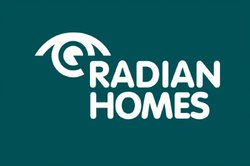We have been working with our Housing Association customers to support their efforts to maintain safe and comfortable homes for their tenants with the support of specialist mould kits and expert guidance on appropriate respiratory protection to keep their staff safe during remediation work.
What are the Risks?
When applying remedial mould sprays to remove mould from internal walls of a property, most effective solutions often contain Chlorine which produces a toxic gas once applied and has a strong, irritating odor. Chlorine is used as bleach in the manufacture of mould removal products. This gas is not a particulate, so standard particulate masks will not protect your staff.
What Equipment do I need to protect my Staff?
PWS has worked with several housing associations to develop best practice guidance and specialist mould kits containing appropriate respiratory protection. Every housing association will have different requirements and considerations so we recommend that you speak to your Account Manager (or get in touch if you are not a customer), however, fundamental considerations are outlined below.
It is essential that you change to a combination filter (if not already in use) to ensure that the operative is protected from any harmful gases or odours produced when mould treatment is carried out. This will require upgrading to a product which is specifically designed for use with particulates and vapours. If you are in any doubt as to whether you need to be using a combination filter, check the MSDS for the specific chemicals you are using.
Our customers use the AerGo which not only protects from particulates and vapours, but is fully compatible with existing PAPR infrastructure of hose & hood and holdall. The other advantage of the AerGo is that it also protects the operative from a wide variety of additional jobs, making it a great solution to protect workers from a variety of particulate and vapour risks.
The charcoal odour prefilter can also be used with the existing basic unit and is designed to take out large particles, preserving the filter and capturing odours. Many of our housing accociation customers include these as an optional extra in their asbestos kits.
How Else Can I Mitigate the Risk of Chlorine Exposure?
As well as providing appropriate safety equipment for the task, it is incumbent upon the employer to mitigate risk of chlorine exposure where possible when carrying out mould remediation. Considerations should include:
- Limiting exposure time
- Ensuring sufficient ventilation within the room
- Safe application methods
- Any allergies of workers
- Any other allergens, chemicals or particulates present
For more guidance on protecting your staff from chlorine exposure and your responsibilities to comply with COSHH regulations, visit the HSE’s website here.
If you require more information on choosing the correct respiratory protective equipment (RPE) for your employees or would like to speak to us about our Mould or Asbestos Kits, please get in touch with our team or speak to your Account Manager.
For more information on Mould Management for Housing Associations and an update on Awab’s Law, visit our helpful article here.




